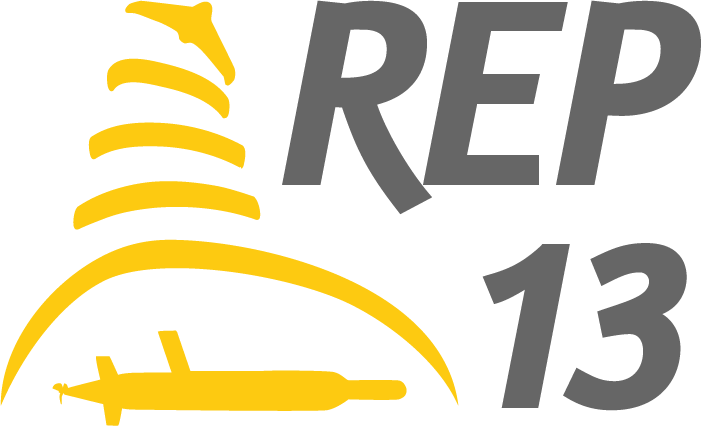Taking advantage of the morning lull in the winds we launched X8-02 with the IR camera. This outside the Setubal channel in 40m depth after a 45 minute commute on the Bacamarte. The primary issue of UAV controller glitches were ostensibly resolved by moving the onboard controller software to an earlier release which was deemed to be stable. So the launch of the 02 was not only to test this older version of the flight software, but given time was running out on using the IR camera (which was set to return to Norway Tue 14th night), we combined multiple objectives. This flight on fully manual pilot mode was very successful with Ricardo Bencatel on the controls. More importantly, from the ship we were able to discern a surface slick which seemed to indicate temperature variations in the water column. In addition real-time imagery from the IR camera indicated a distinctly separated filament; to validate the UAV data, we opportunistically deployed the Xtreme 2 AUV under the control of T-REX for a rapid 200m X 200m survey with Yo-Yo's around a centroid. Even as we were running out of time on station, the AUV and T-REX performed well and both the UAV and AUV were successfully recovered. The latter after an hours worth of survey data. Co-temporal CTD data from the Noptilus on a test in the same area as the Xtreme was also collected. Analysis of both showed a distinct spike in temperature, correlated with a change in density. We believe this is among the first for opportunistically having an AUV and UAV working the same area to identify a feature of scientific interest.
Around mid afternoon, all vehicles were recovered and the Bacamarte headed up the shipping channel in Setubal. Mid-way, we turned around and deployed the Noptilus for bathymetric surveys. A power spike seen when the IMU was turned on had to be diagnosed. Consequently for safety reasons, the IMU was turned off and the AUV was deployed and maintained at the surface following the ship while being controlled by Neptus. For additional safety, a RHIB with LSTS personnel was deployed keeping the AUV in view. On the advice of Lt. Luis Quaresma, a physical oceanographer with expertise of features in the Setubal area, we opportunistically deployed a Wavy drifter. The channel at the end of an estuary has strong tidal influence; with an oncoming high tide pulling the drifter towards Setubal, the vessel, AUV and the drifter were moving in opposite directions.
On recovery of the Noptilus AUV, a quick look on our Neptus consoles showed that the Wavy was heading down channel and was about 4 km away from the Bacamarte in choppy seas. Two volunteers (Javier Gilabert and Kanna) were recruited to go back and recover the drifter. The journey to and from was exciting on a RHIB with a very competent RHIB driver and took about an hour. Javier and Kanna's legs felt more like jelly on a safe return to the Bacamarte.












